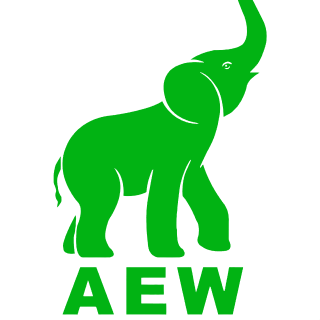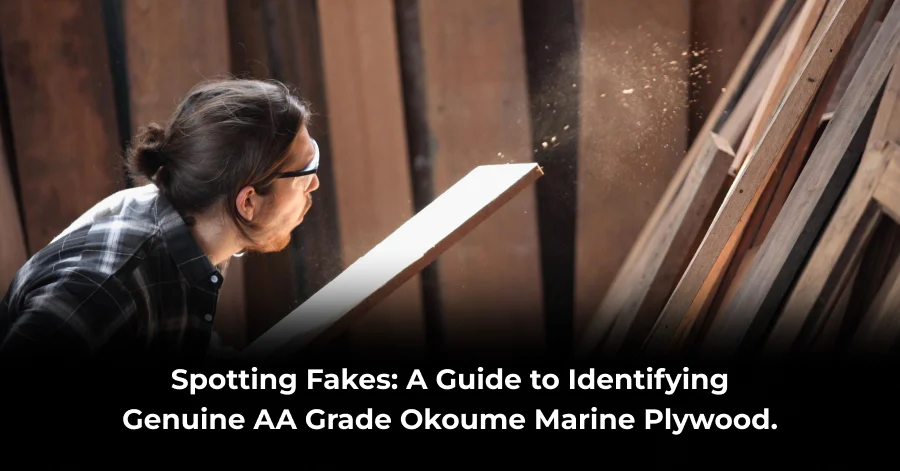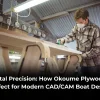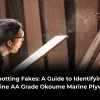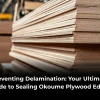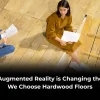You’ve spent countless hours sketching, planning, and dreaming about your project. Maybe it’s a stunning boat deck that gleams under the sun, a custom-built kayak for serene weekend adventures, or a piece of high-end furniture that’s destined to become a family heirloom. At the heart of this vision is a material known for its beauty and performance: AA Grade Okoume Marine Plywood.
But here’s the hard truth the seasoned pros know: not all plywood labeled “marine grade” or “Okoume” is created equal. The market is flooded with imitations and inferior products that can turn your dream project into a costly, frustrating nightmare. As a trusted source for premium woodworking supplies, we believe an educated customer is our best customer. This guide is your essential toolkit for cutting through the noise and confidently identifying genuine AA Grade Okoume Marine Plywood.
Why the Fuss About Okoume? Understanding the “Superwood”
First, let’s talk about why Okoume Plywood is so highly sought after. Sourced from the Gabon region in West Africa, the Okoume tree (Aucoumea klaineana) produces a timber that is a boatbuilder’s and fine woodworker’s dream.
- Lightweight Champion: Okoume is exceptionally light, often 20-30% lighter than many traditional marine plywoods like Meranti. This is a critical factor in boat building, where every pound saved translates to better performance and fuel efficiency.
- Silky Smooth Surface: The face veneers of genuine Okoume are fine-textured and virtually knot-free. This creates a flawless canvas that takes epoxy, varnish, and paint beautifully, resulting in a professional, glass-like finish.
- Excellent Bendability: Its pliability makes it ideal for the complex curves and compound bends found in modern boat hulls and custom furniture designs.
When you upgrade to the AA Grade Okoume Marine Plywood, you’re specifying the highest quality sandwich. The “A” grade refers to the quality of the face and back veneers—smooth, sanded, and free of defects. The core is solid, with inner veneers that are also high-grade, ensuring structural integrity and preventing voids that can trap water and lead to rot.
The Red Flags: How to Spot a Fake
Walking into a woodworking supplies store or browsing online can be overwhelming. Here are the critical red flags that should have you walking the other way.
- The Price That’s Too Good to Be True
This is the number one rule. Genuine, imported Okoume Marine Plywood is a premium product. Its harvesting, processing, and shipping are costly. If the price is significantly lower than other reputable suppliers, it’s almost certainly a compromise. You might be looking at a lower grade (like AB or BB), a different species entirely (like Lauan or Poplar being passed off as Okoume), or a panel full of hidden voids. Remember, saving $50 on a sheet now could cost you thousands in a failed project later. - The Misleading Label
Be wary of vague terms. “Marine-Type,” “Boating Plywood,” or “Exterior Grade” are not the same as true Marine Plywood. Genuine marine plywood is manufactured with waterproof phenol-formaldehyde glue and is held to strict standards regarding core voids. Similarly, a sheet might be labeled “Okoume Face” which only guarantees the outer veneers are Okoume, while the core could be made of inferior, heavier wood. - The Tell-Tale Core: Inspecting the Edges
This is where the truth is revealed. Take a close look at the edge of the sheet.
- Genuine AA Grade Okoume Marine Plywood: The edge will reveal many thin, uniform layers (plies) with a consistent, light tan color throughout. You should see minimal to no gaps or voids between the layers.
- The Imitation: The edge might show thick, uneven plies, dark patches indicating different wood species, or—most damningly—significant black voids or gaps. These voids are pockets of weakness. Under stress or prolonged moisture exposure, they can delaminate, causing the panel to fail.
- The Feel and Look of the Face Veneer
Run your hand across the surface. Genuine Okoume Plywood has a satin-smooth, almost silky feel. The grain is typically straight and subtle, with a uniform pale pinkish-brown hue. Fakes or lower grades will have a rougher surface, visible patches, knots, or repairs filled with putty. Hold the sheet at an angle to the light; any surface imperfections will become glaringly obvious. - Weight and Sound
Due to its low density, a full sheet of genuine Okoume Marine Plywood feels surprisingly light for its size. If it feels heavy and dense, it’s likely not pure Okoume. You can also try the “tap test.” Gently tap the surface in different areas with your knuckles. A consistent, solid sound indicates a solid core. A hollow or inconsistent “thud” can signal internal voids or delamination.
Your Buying Checklist for Genuine AA Grade Okoume Marine Plywood
Before you commit, run through this checklist:
- Price Check: Is it competitively priced with other premium suppliers, not discount warehouses?
- Certification & Stamping: Does the panel have a legible stamp specifying the species (“Okoume”), grade (“AA”), and standard (e.g., BS 1088 or Lloyd’s Register)? This is a major credibility indicator.
- Edge Inspection: Are the plies thin, numerous, consistent in color, and free of significant voids?
- Surface Inspection: Are both faces smooth, sanded, and free of knots, patches, and discoloration?
- Supplier Reputation: Are you buying from a specialized, reputable woodworking supplies store or a known expert in marine-grade woods?
Why Your Choice of Woodworking Supplies Store Matters
Your project deserves more than a transactional purchase from a big-box store. Partnering with a specialized woodworking supplies store that understands the nuances of marine plywood is invaluable. Expert staff can provide guidance, confirm the authenticity of the product, and often have relationships with top-tier mills. They stake their reputation on the quality of the materials they sell, ensuring you don’t have to play a guessing game with your precious time and money.
Also Read – Building a Kayak or Canoe with Okoume Plywood: A Step-by-Step Guide
AEW Woods: Your Trusted Partner for Authentic Marine Plywood
In a world of compromises, finding a supplier you can trust implicitly is half the battle won. This is where AEW Woods stands apart. For decades, AEW Woods has built a sterling reputation as a leading importer and distributor of the finest exotic and marine-grade woods in North America.
When you specify AA Grade Okoume Marine Plywood from AEW Woods, you are guaranteed:
- Uncompromising Authenticity: AEW Woods sources directly from the most reputable mills, ensuring every sheet is genuine Okoume Marine Plywood that meets or exceeds international marine standards (BS 1088).
- Rigorous Quality Control: Each panel is inspected, so you receive a product free of voids, with flawless faces, and perfect for epoxy saturation and fine finishing.
- Expertise You Can Rely On: The team at AEW Woods isn’t just selling wood; they are passionate craftspeople and problem-solvers. They offer unparalleled technical support and advice, helping you select the perfect material for your specific application.
- A Commitment to the Craft: By choosing AEW Woods, you are not just buying wood; you are investing in a partnership with a company that is as committed to the success of your project as you are.
Conclusion
Identifying genuine AA Grade Okoume Marine Plywood is a skill that protects your investment, your labor, and your vision. It’s about looking beyond the label and understanding the material’s soul—its weight, its edges, its feel. By arming yourself with this knowledge and choosing to partner with esteemed suppliers like AEW Woods, you move from being a buyer to a connoisseur.
You ensure that the foundation of your project is as honest and high-quality as the craftsmanship you pour into it. So, take your time, inspect diligently, and build with the confidence that comes from using the real thing. Your masterpiece deserves nothing less.
Frequently Asked Questions (FAQs)
- Is all Okoume Plywood automatically marine grade?
No, this is a common misconception. Okoume Plywood refers to the wood species. “Marine Grade” refers to its construction—specifically, the use of waterproof glue and a void-free core. You can have non-marine Okoume plywood, but all genuine Okoume Marine Plywood is made from Okoume. - Can I use a lower grade like AB or BB for parts that won’t be seen?
While you can, it’s not always recommended for critical structural components. Lower grades may have more core voids, which compromise strength and long-term rot resistance. For hidden structural parts like bulkheads, using a high-quality marine plywood like A-A or A-B is a safer bet for the longevity of your project. - How does Okoume Marine Plywood compare to Hydrotek or Meranti?
- Okoume: Best for weight-critical applications and where a perfect finish is desired. It is the lightest and has the smoothest face.
- Meranti: Heavier and stronger, with excellent rot resistance. A great, durable choice for hulls and structural parts where weight is less of a concern.
- Hydrotek: A brand of marine plywood (often made from Meranti) known for its dark, epoxy-coated faces, making it highly durable and moisture-resistant during construction.
- How should I store my Okoume plywood before use?
Store it flat in a dry, covered area. Never lean it against a wall, as this will cause it to bow permanently. If storing for a long period, sticker it (place small wood strips between the sheets) to allow for air circulation. - Does AEW Woods ship nationally?
Yes, AEW Woods has a robust logistics network and can ship their premium woodworking supplies, including full sheets of Okoume Marine Plywood, to professional shops and passionate DIYers across the United States.
